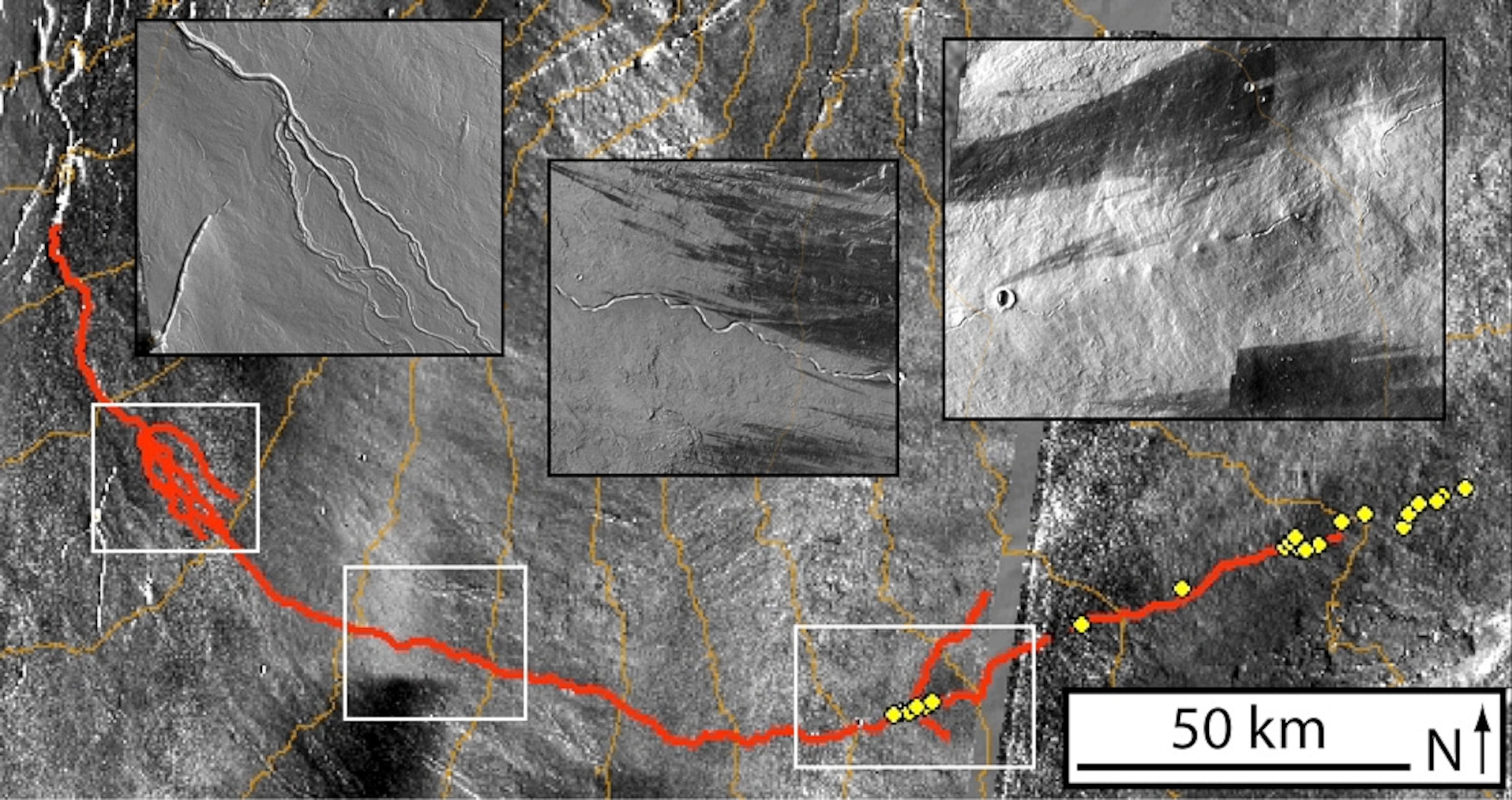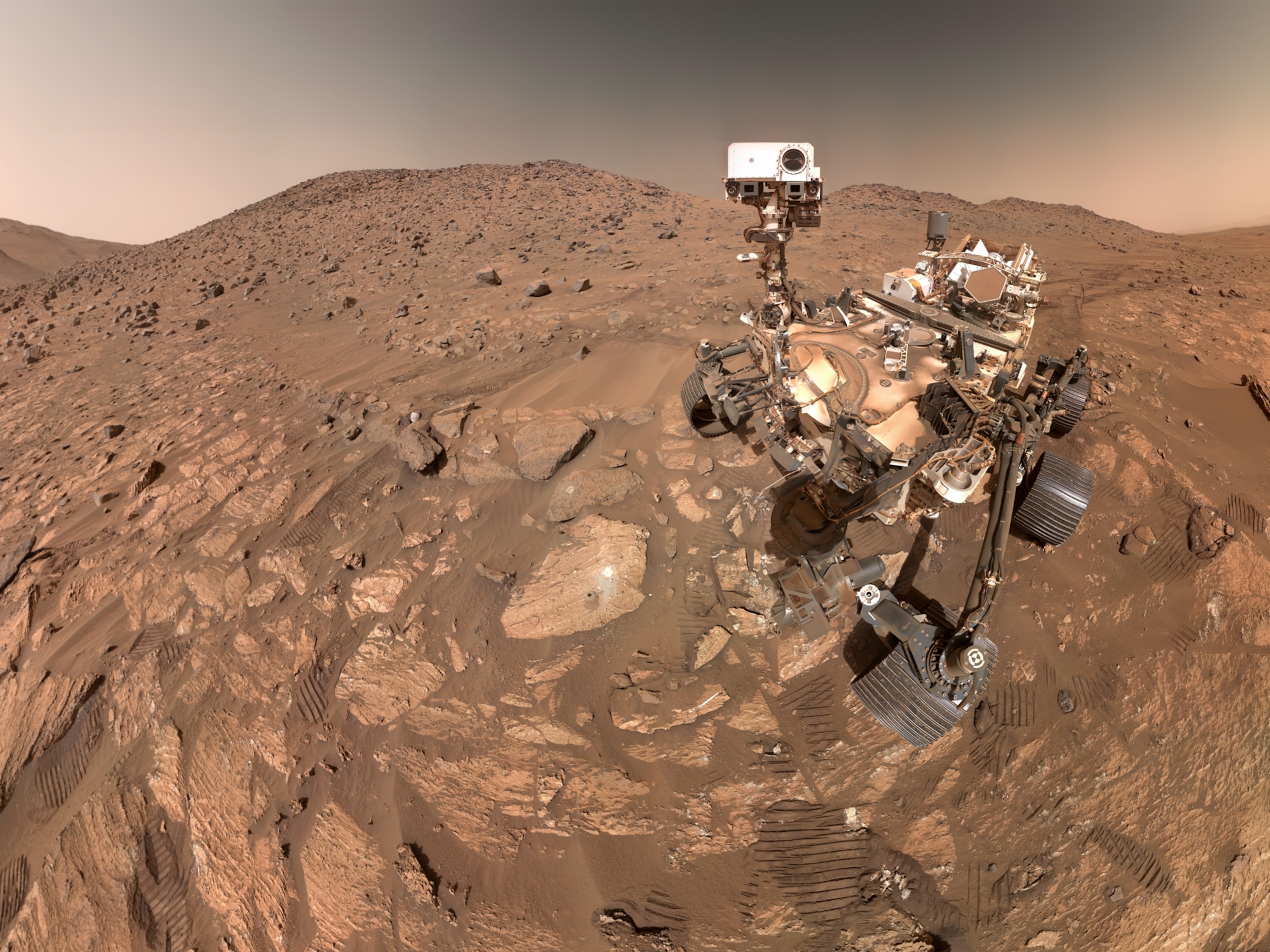
Lava, Not Water, Made Mars "Riverbed"
At least one channel thought to have been carved by water was actually built by lava flows, according to a new study of Martian surface features.
A channel in an ancient Martian "riverbed" wasn't carved by liquid water but was built by molten lava, according to a new study of surface features on Mars.
Pictures of the red planet have long revealed features such as valleys and alluvial fans reminiscent of those seen around water bodies on Earth. (Related: "Huge Mars Region Shaped by Water, Rover Mission Finds.")
Water is a prerequisite for life as we know it, so these formerly wet landscapes have been touted as some of the best places on Mars to look for traces of past life.
But new high-resolution images of a peculiar 168-mile-long (270-kilometer-long) channel near the Ascraeus Mons volcano aren't likely to have been made by water after all.
"We started seeing that, instead of this [liquid] cutting into an existing surface, it was building a surface—it built a ridge up to 40 meters [130 feet] high" millions of years ago, said study co-author Jacob Bleacher of NASA's Goddard Space Flight Center in Greenbelt, Maryland.
The channel is also roofed over in some areas and lined with vents—features most often associated with lava tubes. On Earth, lava tubes form during sustained volcanic eruptions, when lava flowing through previously solidified masses leaves behind empty channels in the rock. (Related: "Mars Has Cave Networks, New Photos Suggest.")
"You don't see this on Earth in [river] settings," Bleacher said. "But you see it all the time in volcanic settings. So that's kind of our smoking gun."
That's not to say liquid water never flowed on Mars, said Bleacher, who presented his work last week at the 41st Lunar and Planetary Science Conference.
But the findings do mean that researchers might need to reevaluate when and where they think water might have existed on the red planet. (Related: "Mars Had Liquid Water in Recent Past, Rover Finds.")
Solving a Martian Puzzle
The results are also exciting because they add new layers to Mars's volcanic history, said Laszlo Kestay, a planetary geologist on the NASA team that produced the new images of the channel.
"I think there are some very clearly water-formed features on Mars, but there are other things that are more puzzling. Jake and colleagues make a very compelling case that at least this one is volcanic," said Kestay, with the U.S. Geological Survey's Astrogeology Science Center.
And there's a good chance other channels in the Ascraeus Mons area will turn out to be lava-made as well, Kestay said.
In general, the latest find is among the myriad new details about Martian lava flows being uncovered by high-resolution imaging of the Martian surface, Kestay said.
The new image data, he said, are "revealing not just these channels but a whole suite of smaller volcanic features and showing that volcanism is more widespread spatially than people thought."
NASA Grants a "HiWish"
In addition, the new study highlights a pioneering program that allows people anywhere in the world to get behind the lens of the Mars-orbiting camera used in Bleacher's work: NASA's High Resolution Imaging Science Experiment.
HiRISE started sending back color pictures of the Martian surface in 2007, with the primary goal of finding a suitable landing site for the upcoming Mars rover Curiosity, slated to launch in 2011.
Now that the options have been narrowed down to four possible landing sites, NASA has launched HiWish, a Web site where the public can suggest new targets for the high-resolution camera.
Bleacher's research is based on images taken after he had submitted a request to a beta version of HiWish made available to scientists.
In previous pictures of the Ascraeus Mons region of Mars, "the big hindrance has been that you can see [only] the big features," Bleacher said. "But you really need the details to see how things evolved."
HiRISE offers "a more detailed glimpse into what's going on with these volcanoes. Now, as we're able to look at these things in their entirety, we really need to readdress our thoughts on how they formed."





